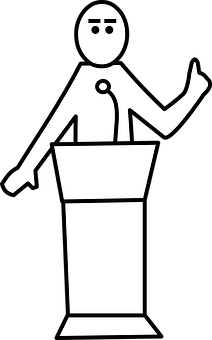Appropriate Format
Letter
Communicating your ideas and sending them to another person. Letters have a specific audience, therefore, the writer can be more personal and direct in their approach.
Include: Show you understand that this piece of writing is intended to be sent to someone.
- Use addresses (real or fictional).
- A date (real or fictional).
- Address the recipient – Dear Sir/Madam, or the name of person.
- Appropriate signing off – Formal: Yours Faithfully; Informal: Yours Sincerely
- Use paragraphs with topic sentences.
- Conclusion: What you expect from the reader.
Article
Written piece that is expected to feature in a public newspaper or magazine. Articles have a somewhat wider audience. It will most probably appeal to readers who are interested in that particular subject. Also, demographic of readers reflects the type of newspaper or magazine that it features in.
For example, an article about hummingbirds would be most valued in a magazine about birds.
Include:
- Show you understand that this piece of writing is intended to be amongst other texts.
- Use an intriguing, appropriate yet simple title.
- Clearly matched subheadings.
- Introductory overview.
- Use paragraphs with topic sentences.
- Conclusion: Synthesise main point and what you expect from the reader
Leaflet
Usually a small pamphlet that contains information or advertising. Their aim is to present an issue or a product.
Include:
- Show you understand that this piece of writing is intended to be amongst other texts.
- Use an intriguing, appropriate yet simple title.
- Clearly matched subheadings.
- Introductory overview.
- Use paragraphs with topic sentences.
- Conclusion: Synthesise main point and what you expect from the reader.
Speech
A talk given to a public audience about a subject of importance to the listeners.
Include:
- Show that you understand you are speaking directly to a live audience.
- Introduce yourself, explaining why you have the authority to address the audience.
- Make inclusive comments and use rhetorical indicators which would appeal to the specific audience before you.
- Clearly signpost your ideas to guide your listeners.
- Use paragraphs with topic sentences.
- Conclusion: Synthesise main points and what you expect from the reader.
- Clear sign off e.g. Thank you all; I appreciate you listening to me this afternoon.
Essay
A short piece of writing on a specific subject and puts forward the writer’s ideas, theories and arguments.
Include:
- Show understanding that you are addressing an issue of importance.
- Clear introduction- explaining the problem and why it should be considered.
- Fluently sequence a range of ideas that match the initial issue.
- Use paragraphs with discourse markers and topic sentences.
- Conclusion: Synthesise main points and outline logical judgements.
- Clear sign off e.g. Thank you all; I appreciate you listening to me this afternoon.
- How do you sign off a letter if you do not know the recipient?
- Your answer should include: Yours / Faithfully
- What does a leaflet include?
- Your answer should include: Information / Advertisement / Product / Issue
- What could you present in an essay?
- Your answer should include: Ideas / Theories / Arguments

